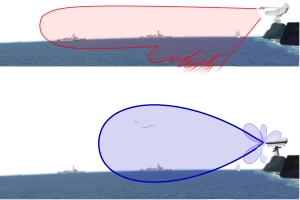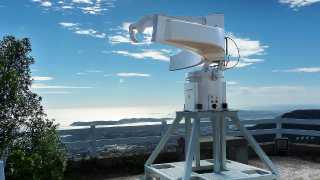Inverse Cosecant Square Antenna Pattern

Figure 1: Coverage of an inverse cosecant-squared diagram (upper) vs. the simple “Fan-beam” (lower diagram)

Figure 1: Coverage of an inverse cosecant-squared- diagram (upper) vs. the simple “Fan-Beam” (lower diagram)
Inverse Cosecant Square Antenna Pattern
ASDE and VTS radar systems use antennas designed to provide inverse cosecant-squared coverage and direct energy preferentially towards the surface giving constant gain for targets on the surface.
The coverage diagram shows the antenna pattern of a vessel radar with an inverse cosecant-squared antenna pattern in the upper diagram. The antenna is designed to preferentially radiate below 0° (the horizon line) to provide constant detection for targets approaching on sea surface. The simple Fan-Beam in the lower diagram using the same power, leads to losses in the near and far region. A big amount of power is radiated in unwanted directions (e.g. into the air-space).
The antenna of the long-range air and surface coastal surveillance radar Coast Watcher 100 may be mountet upside down. Therefore it provides either a Cosecant Squared or an inverted Cosecant Squared pattern


